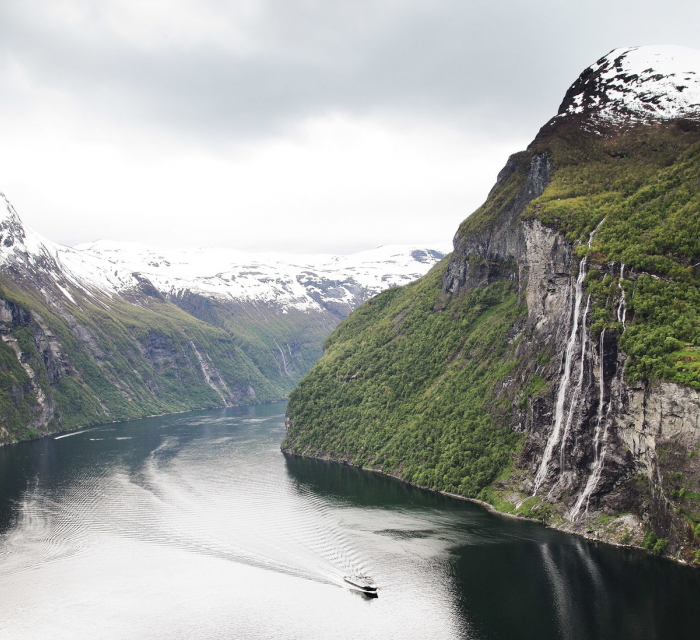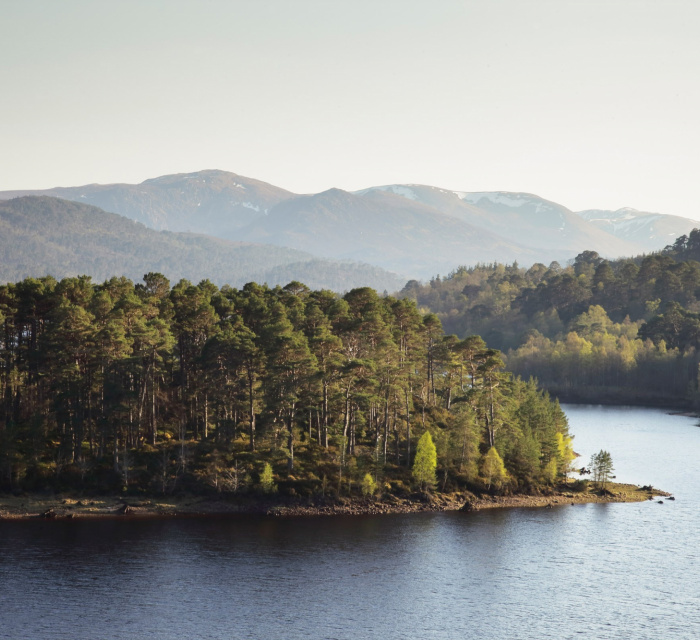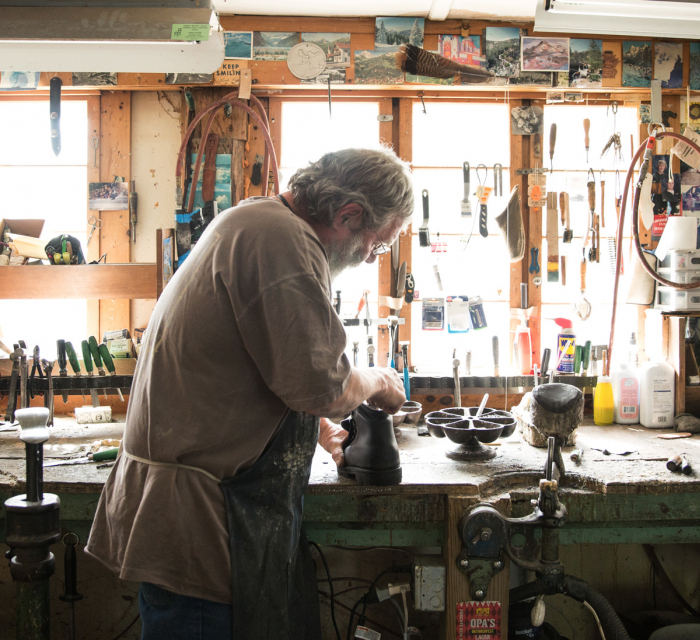In the north-west corner of Wales lies one of Britain’s revered wild places, Snowdonia National Park. Known in Welsh as ‘Eryri’, Snowdonia spreads 823 miles across diverse landscapes of peaked mountains, rolling moors, boggy marshland, ancient forests, and rugged coastline. Cutting through this varied terrain is the Afon Conwy (River Conwy), which runs from its source at Llyn Conwy (Lake Conwy) to Conwy Bay, where it pours out into the Irish Sea. On its journey, the wild mountain river cascades over falls, tumbles over rapids of ancient rock beaten smooth over time, and gathers momentum at Rhaeadr y Graig Lwyd (Conwy Falls), whereafter it funnels into a narrow gorge carved out thousands of years ago in the last ice age. Finally mellowing after it spills out of the iconic Fairy Glen, the river widens as it passes the village of Betws-y-Coed, known as the ‘Gateway to Snowdonia’.

Saving the River Conwy
It can take a collective of determined individuals to challenge threats that face the local ecology and community. Save the Conwy, an NGO powered by a group of concerned kayakers, has been the driving force behind the campaign against the instalment of a hydroelectric power scheme that would impact the Fairy Glen, a stretch of wild water and ancient woodland within the Snowdonia National Park.
Words by Rachel Maria Taylor, Photography by Jody Daunton

Overhanging the shaded gorge between the Conwy Falls and the Fairy Glen are Welsh oaks and the usual suspects of broadleaf trees, whose leaf litter drops into the ravine below adding to the heady, damp, earthy smell. The area is abundant with wild flora and fauna: families of otters scurry the banks; over 30 species of birds nest in the Fairy Glen woodland; wild fish and a plethora of aquatic species swim in the hurried waters; ferns sprout from the riversides; and lichens, liverworts and mosses cling to the nearby rocks and trees, thriving in the damp conditions. At full swell, the ambient noise is deafening; the rushing water is charged from the recent rainfall, chaotically spewing off the mossy boulder-strewn banks and algae-covered ravine walls. The river is energetic and truly alive.



Sadly, however, this pristine environment of staggering beauty and rare, endemic species has come under threat after becoming a sought-after location for the instalment of a hydroelectric power scheme that plans to divert up to nearly 80 percent of the river’s flow away from the gorge, turning the river into a trickle. Believed by many to be a means of ‘green’ energy, on the face of it, hydro-schemes appear to be a positive move away from fossil-fuel dependent energy production in a bid to be more sustainable and environmentally conscious. However, mounting evidence over past decades suggests otherwise, and some sites simply aren’t well-suited for this sort of development.
In and around the Betws-y-Coed village live a band of kayakers, many of whom have settled in the area to be close to the nearby white water. In the early mornings and on days off, when the rain falls – which happens extremely frequently in Snowdonia, one of the wettest places in the UK – the kayakers race to the river to paddle its fast-flowing torrents.“Upon hearing about the hydro-scheme, my initial thoughts were quite selfish and I feared that our kayaking days would be lost,” explains Tom McLay, a seasoned kayaker and paramedic in the area. “But it quickly became clear that recreation, although important to all of us, was inconsequential compared to the destruction it would cause to the precious ecosystems of the Fairy Glen. Not only that, but we could see that if permitted it would set a precedent for future schemes within the national park. If this unspoilt river system is allowed to be developed, is anywhere sacred?”

The Fairy Glen falls within a protected national park and is classified as a Site of Special Scientific Interests (SSSI), yet it still faces the very real threat of development. As regular users of the river, the kayakers felt the weight of responsibility to protect these riparian and river ecosystems and oppose the scheme: “We believed that if we sat by and did nothing that the scheme would go ahead. It was a simple choice really,” says Rob Litherland, a River Rescue Specialist and local kayaker.
There are a myriad of ecological concerns around the proposed scheme, including the worry of unforeseen cascade effects. Short term concerns include the river area becoming polluted by oil from the construction vehicles and deposits of building materials – which have proved a problem at other hydro-scheme sites within the Snowdonia National Park. However, it is the long-term environmental impacts that have the kayakers most worried. Hydro-schemes can completely alter the aquatic ecology and surrounding environment both up and downstream of their instalment. Downstream areas can become starved of sediment and nutrients that they should receive from the river’s flow; this can considerably alter ecological processes, contribute to the disappearance of specific habitats, like wetlands and river deltas, and lead to downstream erosion of the river bed and banks. They also prevent migrating fish from swimming up and downstream, to and from their spawning grounds, and the fishes’ disappearance from upstream ecosystems can have a negative knock-on effect. “The reduced flow will cause problems for plant life in the gorge due to reduced humidity and splash zones; the Fairy Glen is the country’s tenth most important site for critically endangered humidity-dependant ravine bryophytes [non-vascular plants, such as mosses, hornworts, and liverworts]. The whole ecology of a river like this is based upon its natural flow patterns”, tells Dan Yates, an optometrist and a key campaigner for Save the Conwy.

Furthermore, for the developers to access the site and for the powerhouse’s construction, irreplaceable ancient woodland would need to be torn down. In opposition to the scheme, Rory Francis, Communications Officer Wales for the Woodland Trust has said, “Ancient woods are our richest, most important sites for a vast range of insects, birds, animals, flowers and trees, and are home to more threatened species than any other UK habitat … so we simply cannot afford to lose them.”
However, the concerns do not end at the prospective environmental impacts; the local community is expected to suffer too. “The closure of the main road over the two years of planned construction would have a detrimental effect on local traffic as well as tourism, which is hugely important for the local area. If given the go ahead, I believe there would be a real loss of recreation and tourists visiting this amazing site”, says Sam Beasley, a mountain bike guide and keen kayaker from the nearby village of Penmachno.
Betws-y-Coed is a honeypot for outdoor- and adventure-lovers on which many local livelihoods depend. The kayakers recognise that “the river, and specifically the Fairy Glen section, currently provides a world-class environment for adventure recreation, such as canoeing and kayaking, along with superb fishing and a truly magical venue for photographers and naturalists. Proposed reductions to flow would significantly limit the recreational activities taking place on the Conwy, all of which have a low environmental impact.”


Formed in 2013 by the passionate group of kayakers with no activism experience, the Save the Conwy campaign was born. Dauntingly opposing a multinational energy company, two government departments, and notable landowners, they initially struggled to get their voices heard, and were often dismissed simply as “a bunch of kayakers who didn’t want the river dammed”, tells Paul Bayliss, head guide at the nearby rafting centre. “No matter how hard we tried it always seemed to be brought back to that.” But this didn’t hinder their enthusiasm, and before long the Save the Conwy campaign was gaining momentum. They began by spreading the message, engaging with locals, lobbying against the proposal, carrying out and commissioning scientific surveys, hydrological assessments, recreational surveys, and water safety assessments. They sought out expert engineering testimony, legal planning objections, submitted countless Freedom Of Information requests, and entered into conversations with many local and national organisations to enlist their support. In early 2015, the Snowdonia Society, an environmental charity based in the Snowdonia National Park, joined the fight and partnered with the Save the Conwy campaign, following which every environmental group in Snowdonia, except the National Trust who are a landowner at the proposed site, came out in opposition to the scheme, along with many recreational and tourism groups.
In March 2016, under the pressure and scrutiny of rallied troops, the Snowdonia National Park Authority (SNPA), the local planning authority for the national park area, refused the energy company’s application, asking for clarification on minor issues. As Dan Yates put it, “it very much felt like they were telling the developers to go away and revise their application”. But nonetheless, the news “really spurred everyone involved in the campaign on to work harder and prove that the Afon Conwy is not the right place for a scheme of this nature,” says Sam Beasley. Barnaby Prees, the youngest kayaker of the group and one of the rising stars in British kayaking, continues, “[after the refusal] it was important to make sure people didn’t forget about it and that we kept the issue alive.”

Shortly after, and as expected, the energy company reapplied to the SNPA for planning permission. Good news came, however, when in September 2016, the application was withdrawn – thought to be because it would be again refused by SNPA due to the overwhelming evidence against the development. Their collective effort had proved successful. However, not all of those involved in the campaign have been wholly optimistic, and some believe that the energy company may be preparing to submit a revised application again in the future.
Amazingly, though, what they have shown is that grassroots activism by everyday people can prove triumphant. Furthermore, they have united people and organisations and built a community with a shared ambition. “Save the Conwy has done wonderful things for the community, uniting people from all backgrounds and interests for a common cause. Traditionally, relationships between kayakers and fisherman in the area have been very poor, but fisherman that I would once have had blazing arguments with, I now consider friends. It really has brought the local community together”, says Tom McLay.
“The campaign grew from something very small to something with a worldwide audience – that is how passionately people feel about protecting the Afon Conwy. I feel that we have done so much together as a local community and it has brought so many different people together. It’s clear that when a collective group of individuals who are so passionate about protecting something, for now and for future generations, that nothing will stand in the way of what is right,” notes Sam Beasley.


“Social media has been enormously helpful in getting the word out, and we are constantly forging new links with professional bodies and companies who share our outlook. We are extremely lucky to have such a passionate and diverse group working together,” tells Tom Laws, a local chemistry teacher, co-writer of a guidebook to paddling Welsh rivers, and the social media manager for the campaign.
Unexpectedly, one of the great successes of the campaign came after the withdrawal of the application for the hydro-scheme. Inspired at a recent Patagonia Grassroots Activist Conference, Save the Conwy has since opened up a supportive dialogue with six other NGOs fighting for free-flowing rivers across Europe, in Albania, Austria, Germany, Italy, Portugal, and Slovenia. Of those, Save the Conwy has united with the two groups also run by kayakers, WET (Wildwasser Erhalten Tirol) from Austria and Balkan Rivers Tour from Slovenia, to create the Free Rivers Fund. Through partnering with paddle-sport companies, the Free Rivers Fund hopes to generate the necessary funds for other grassroots projects to be supported and enabled to fight their own campaigns for free-flowing rivers – as the Save the Conwy campaigners quickly discovered, active campaigning requires financial support.
Although there is still some uncertainty around the River Conwy’s fate, the Save the Conwy campaigners are contributing to a grassroots movement and participating in the mobilisation of a new wave of activism for everyday people to protect the wild places they love. As Rob Litherland reflects, “It has been a very empowering experience, and it has made us realise that people can make change no matter how overwhelming the thing or people you are fighting against seems. Don’t let the feeling that you are too small to make a difference ever stop you!” •
At the time of publication all information presented in this article was true and accurate to the best of the writer’s knowledge.
This story was created in partnership with Patagonia. Another Escape has partnered with Patagonia to highlight some of the many environmental and social initiatives they support through their 1% For The Planet pledge. For The Journeys Volume, Another Escape visits Save the Conwy, a grassroots, kayaker-led organisation working to protect the Afon Conwy, Wales, from a hydroelectric development that would impact both the ecology of the river and the community that enjoys it. Patagonia has been worked closely with the campaign, offering support and mentorship, and a 1% For the Planet grant has been provided to further fund the campaign and enable it to grow.
Since publishing this story, Save the Conwy, having experienced much success with their original campaign, are working under a new banner, Save Our Rivers, which has a more national and international focus. Check them out here.






























